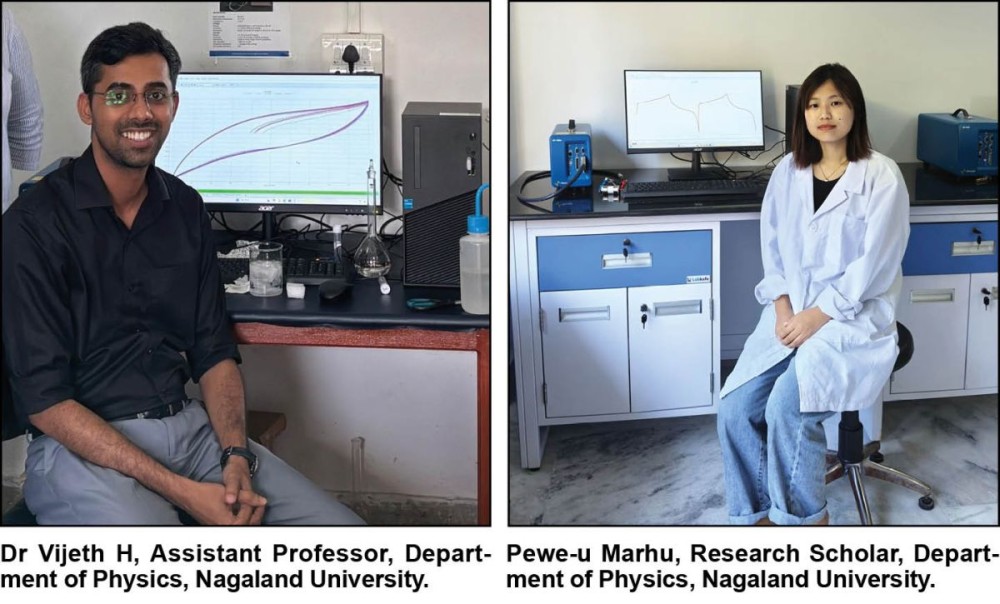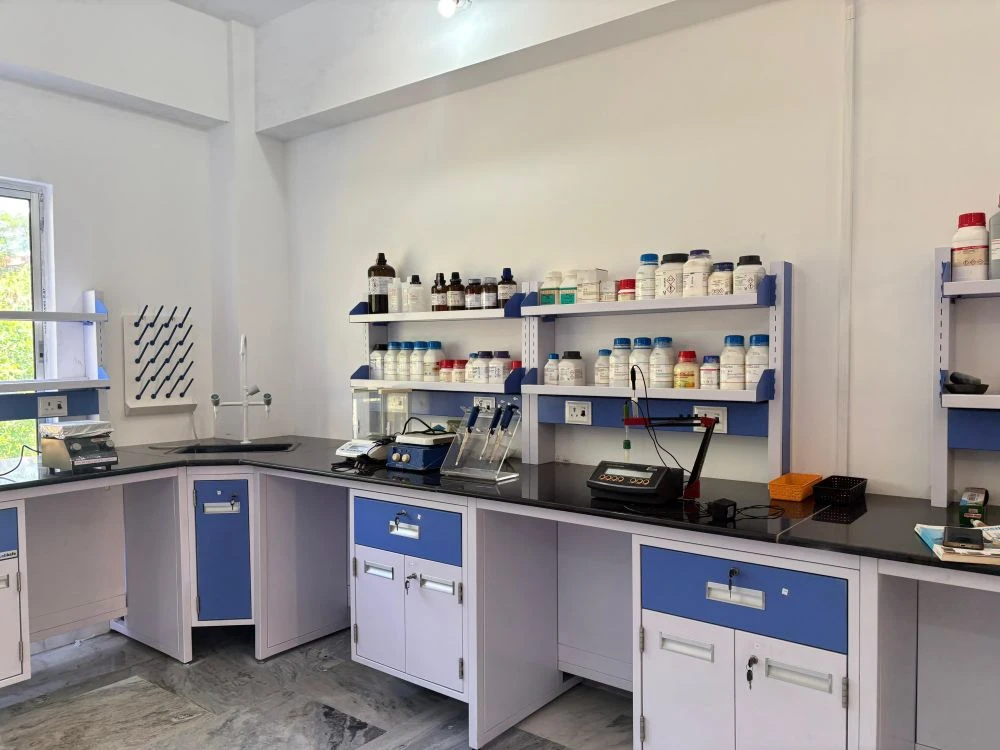Researchers at the Advanced Materials for Device Applications (AMDA) Lab, Lumami campus, Nagaland University, developed a flexible supercapacitor prototype using cobalt-doped molybdenum diselenide, achieving high energy density and durability suitable for wearable and electric vehicle applications.

DIMAPUR, OCTOBER 6 (MExN): In a major scientific breakthrough from Nagaland, researchers at Nagaland University have developed a flexible supercapacitor device capable of powering next-generation wearable electronics, electric vehicles (EVs), and renewable energy systems. The development marks a pioneering contribution from a university in the North East to India’s growing clean energy and storage technology research ecosystem.
The study, described as a first-of-its-kind, compared tungsten, vanadium, and cobalt doping in molybdenum diselenide (MoSe₂) for energy storage applications. Going beyond laboratory material development, the researchers built a fully functional prototype of the flexible supercapacitor, demonstrating its real-world viability.
According to the research team, flexible supercapacitors of this kind could significantly enhance the performance and sustainability of electric vehicles. They can improve regenerative braking systems, provide rapid acceleration boosts, and extend the lifespan of batteries by supplementing them with instant power delivery. The technology also has immediate potential in health-monitoring wearables, Internet of Things (IoT) devices, and robotics.
“This device combines flexibility, high energy storage, and durability, which are critical for future portable and wearable technologies,” said Dr. Vijeth H, Assistant Professor, Department of Physics, Nagaland University, who led the research. “The study is the first to compare tungsten, vanadium, and cobalt doping in molybdenum diselenide for energy storage. Among them, cobalt proved most effective. The team used a simple, eco-friendly hydrothermal process to synthesise the material, making the innovation scalable for industrial adoption.”
He added that the research underscores how scientific innovation from the North East can contribute meaningfully to India’s national priorities. “This research not only showcases scientific excellence from the North East but also strengthens India’s path toward sustainable and self-reliant energy solutions,” he said.

The research was undertaken by Dr. Vijeth H, who conceptualised and designed the study, along with Pewe-u Marhu, Research Scholar, Department of Physics, who conducted the experimental work under his supervision. Their findings have been published in RSC Advances, a peer-reviewed scientific journal published by the Royal Society of Chemistry, United Kingdom.
Marhu said that the next phase of research will focus on improving safety and scalability. “The next steps involve optimising the electrode–electrolyte interface, improving safety with solid-state gel electrolytes, and scaling up the process to pilot-level production. Industry collaborations are also being explored to bring the technology closer to commercialisation,” she stated.
The device, developed at the Advanced Materials for Device Applications (AMDA) Research Laboratory on the Lumami campus, uses cobalt-doped molybdenum diselenide (Co@MoSe₂), a cutting-edge two-dimensional (2D) material. It delivers an impressive energy density of 34.54 watt-hours per kilogram (W h kg⁻¹) and maintains high stability over 10,000 charge–discharge cycles. Tests also showed that the supercapacitor retained its performance after repeated bending and twisting, proving its mechanical robustness for flexible and wearable applications.
The research was conducted entirely at Nagaland University with advanced characterisation support from the Indian Institute of Science (IISc), Bangalore, under its INUP Program. Funding was provided by the Anusandhan National Research Foundation (ANRF), Government of India, which is driving a national initiative on two-dimensional materials research.
Flexible energy storage systems are expected to play a crucial role in enabling energy-efficient technologies, from personal electronics to large-scale mobility solutions.


.jpg)



